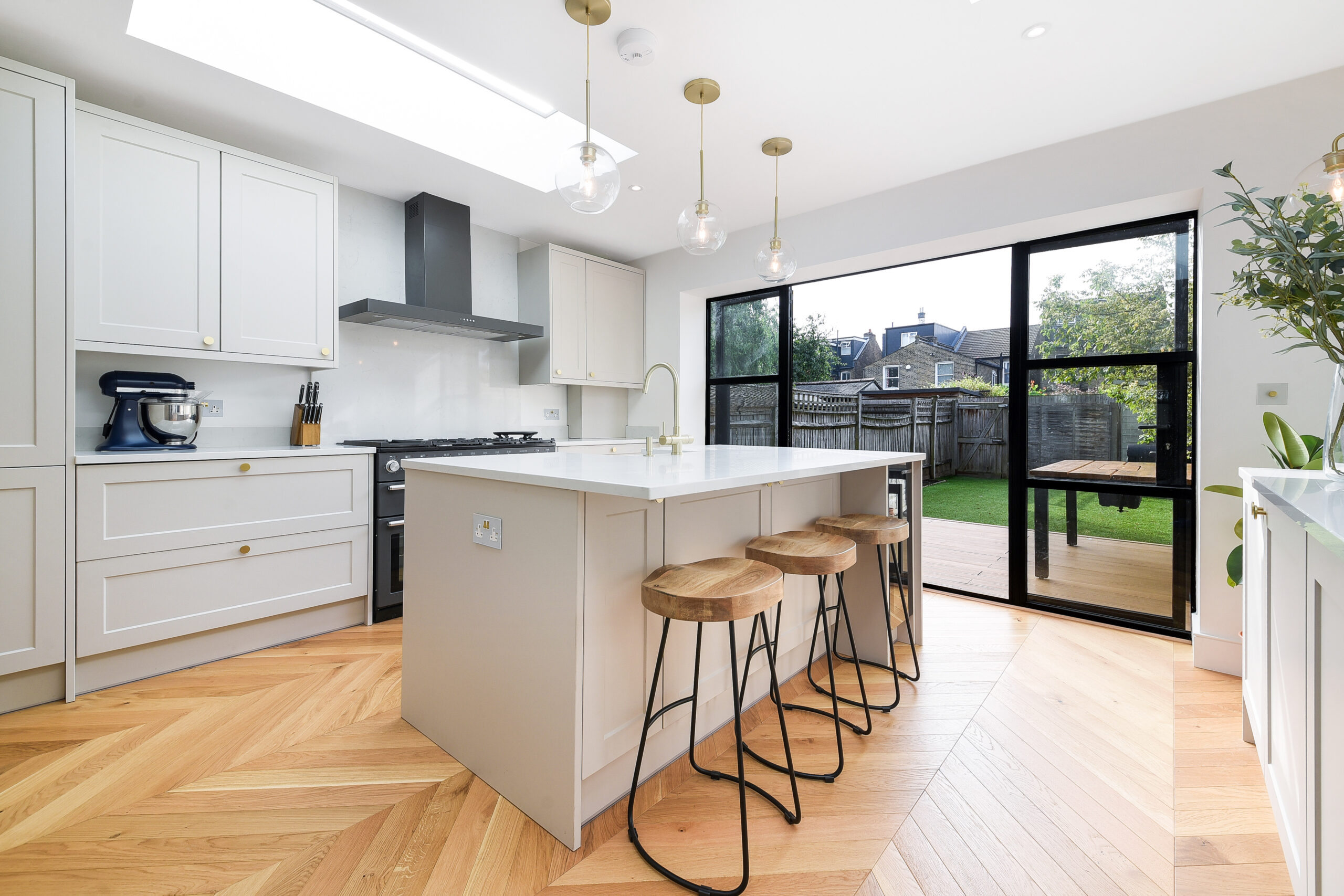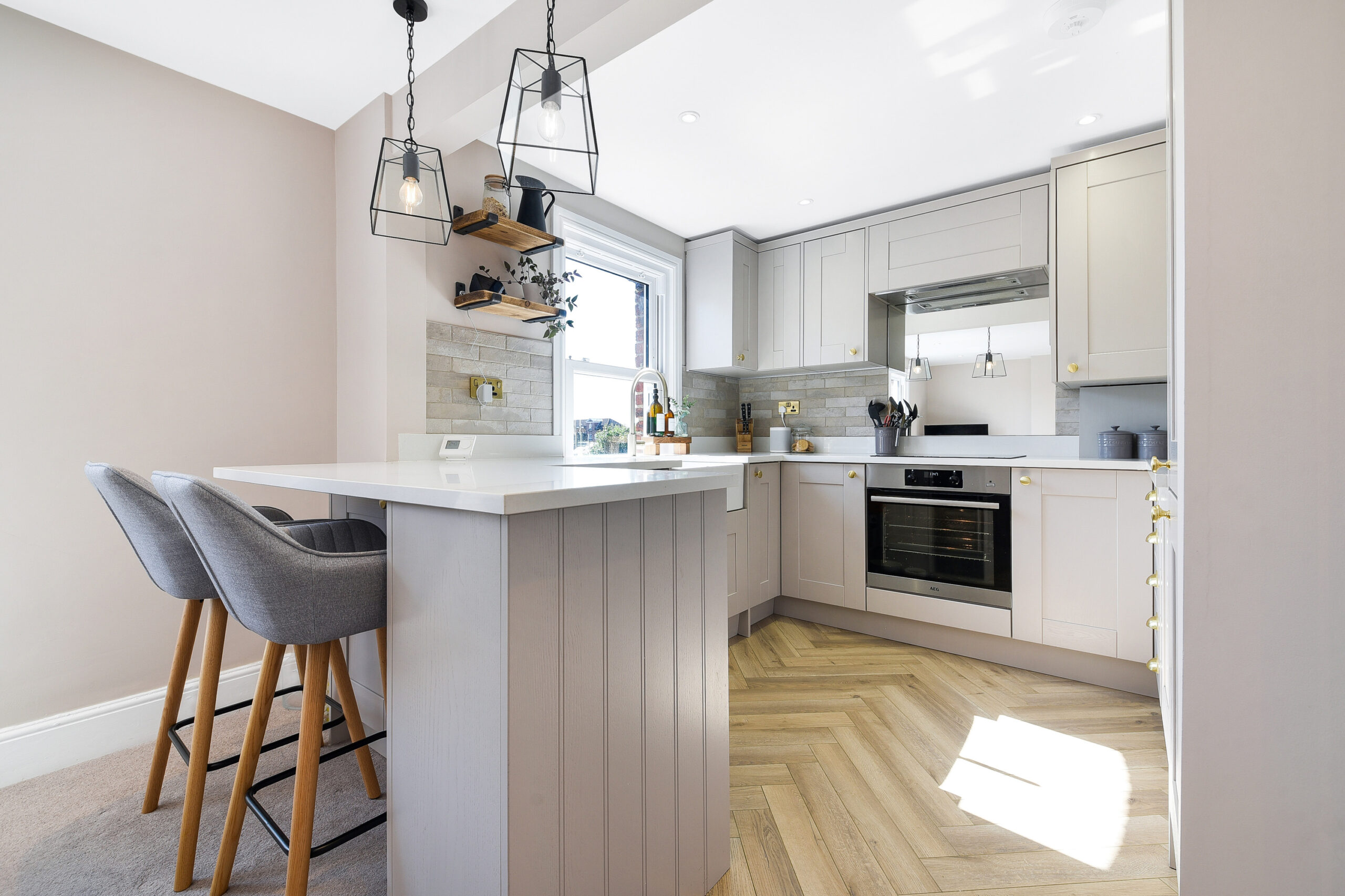
Kitchen Extensions
 A kitchen extension represents one of the most transformative home improvement projects available, offering homeowners the opportunity to create a more spacious, functional, and aesthetically pleasing culinary hub. In many households, the kitchen is regarded as the heart of the home—a place where family and friends gather, meals are prepared, and memories are made. Expanding this space not only enhances daily living comfort but also significantly adds to the property’s overall value. Whether creating a large open-plan kitchen-diner or a cosy casual cooking space, a well-designed extension can redefine how a home is used and appreciated.
A kitchen extension represents one of the most transformative home improvement projects available, offering homeowners the opportunity to create a more spacious, functional, and aesthetically pleasing culinary hub. In many households, the kitchen is regarded as the heart of the home—a place where family and friends gather, meals are prepared, and memories are made. Expanding this space not only enhances daily living comfort but also significantly adds to the property’s overall value. Whether creating a large open-plan kitchen-diner or a cosy casual cooking space, a well-designed extension can redefine how a home is used and appreciated.
The decision to extend a kitchen is driven by various factors. Increasingly, homeowners desire open-plan layouts that seamlessly connect the kitchen to living or dining areas. This layout promotes socialising and interaction, making the space more versatile and welcoming. Additionally, enlarging the kitchen provides the room needed for modern appliances, customisable storage options, and contemporary features such as islands or breakfast bars. Sometimes, existing kitchens are simply too small to accommodate the various appliances and workspaces necessary for efficient meal preparation, and an extension offers a practical solution. Improved natural light, increased room for gardening or cooking hobbies, and the opportunity to incorporate high-end finishes are further incentives that make a kitchen extension an attractive project.

In planning a kitchen extension, it is crucial to consider several key aspects. First, the available space and the layout of the existing property are paramount. The location of windows, doors, and structural walls will influence the design options and the feasibility of the extension. For instance, a single-storey rear extension can dramatically increase the footprint of the kitchen, providing an open-plan style, while a side or wrap-around extension can create additional rooms or storage solutions. Homeowners should also take into account planning permissions and building regulations, especially if the extension exceeds certain size thresholds or is situated within conservation areas. Although many smaller extensions may fall under permitted development rights, it’s essential to verify applicable restrictions to avoid legal complications.
The design phase should focus on harmony with the existing structure, creating a seamless transition between old and new. Hiring a professional architect or a design-and-build company can streamline this process, ensuring that the extension maximises natural light, optimises layout, and incorporates energy-efficient features. Modern kitchen extensions often include large windows, bi-fold doors, or sliding panels to connect indoor and outdoor spaces. These additions not only bring in more sunlight but also bring the outdoors into the heart of the home, making the space feel larger and more inviting. Materials and finishes should be chosen carefully to match or complement the existing property, whether it’s traditional brickwork or modern aluminium frames.
Budgeting is an essential part of planning a kitchen extension. Costs can vary considerably depending on the size of the project, choice of materials, and complexity of the design. A straightforward single-storey extension might start at around £20,000 to £30,000 but can escalate significantly if high-end finishes or structural alterations are involved. Homeowners should allocate funds for professional fees, such as planning applications, structural engineering, and project management, as well as for internal fittings, appliances, and decoration. It’s wise to include a contingency fund for unexpected issues, such as structural problems or supply chain delays, which can add to the overall expense.
Engaging experienced contractors and builders is vital to ensure the extension is completed to high standards, on time and within budget. Clear communication, detailed contracts, and regular site visits help maintain quality control throughout the project. During construction, homeowners should be prepared for some disruption, especially if services such as water, gas, or electricity need to be rerouted or upgraded. Proper planning and flexibility can minimise inconvenience and make the process smoother.
The benefits of a well-executed kitchen extension extend beyond just increased space. Such projects often make the home more appealing to future buyers, should relocation ever be considered, and can also create new economic opportunities by allowing for home-based enterprises, such as catering or craft businesses. An enhanced, functional kitchen elevates everyday living and transforms the heart of your home into a space that reflects your lifestyle and personality.
In conclusion, a kitchen extension offers a superb way to increase both the practicality and desirability of a home. By carefully planning the design, complying with regulations, and working with reputable professionals, homeowners can create a stunning, functional space that enhances their quality of life while adding long-term value to their property. Whether opting for a simple update or a comprehensive renovation, a kitchen extension is a worthwhile investment that will undoubtedly pay dividends in comfort, style, and home appeal.

